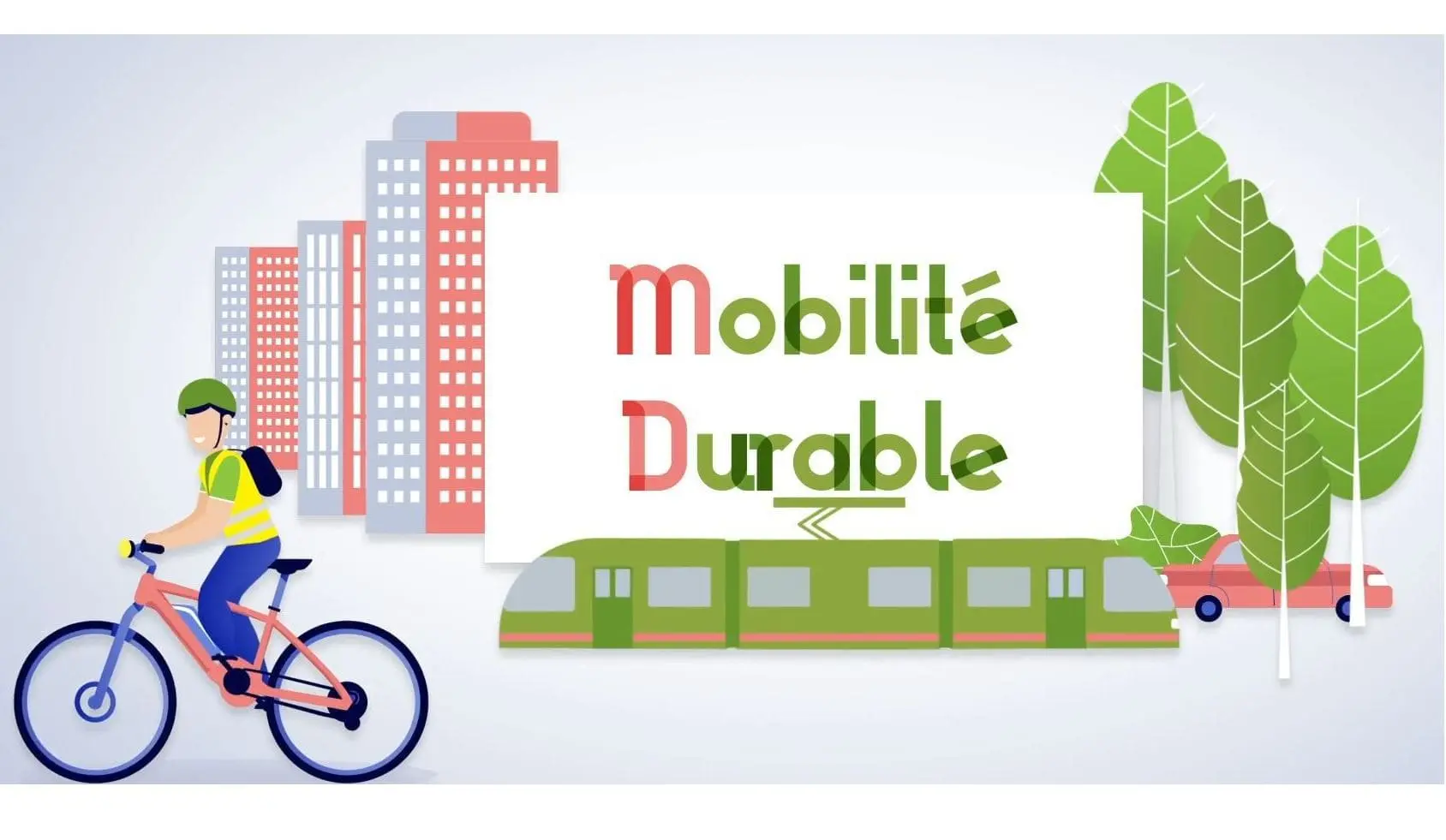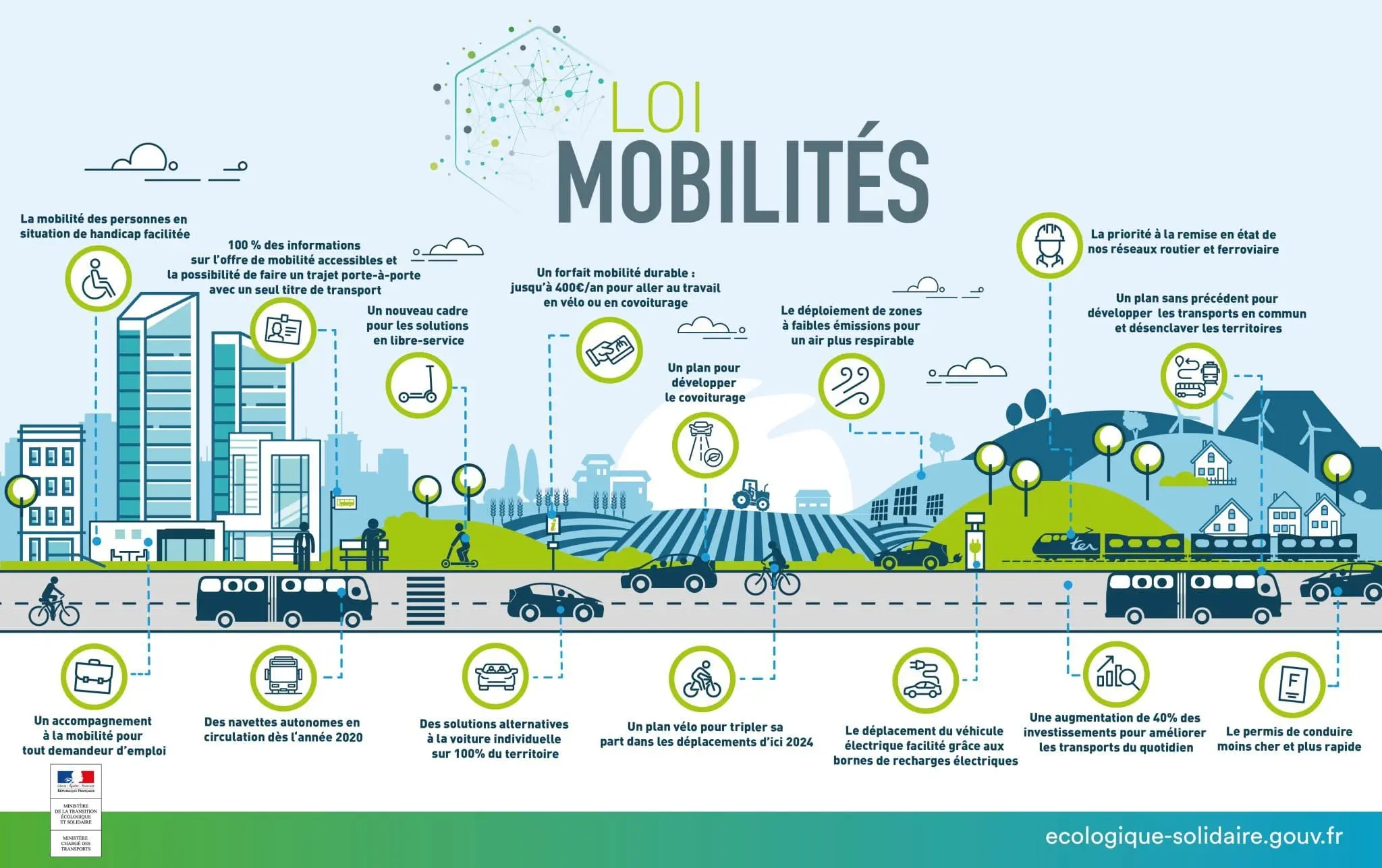
Zero-emission mobility: the legislation that paves the way to a fossil-fuel-free future


Zero emission mobility
As is well known, 31% of greenhouse gas emissions in France are produced by transport (buses, cars, trucks) and 63% of NOx emissions come from diesel road transport. Energy transition is therefore not a far-fetched idea to be taken lightly. Fossil fuels (gas and diesel), which need to be replaced by zero-emission energy sources (electricity and hydrogen) in heavy vehicles, are in the crosshairs. National and European policies all agree on these objectives, with ambitious regulations to reduce CO2 emissions and limit the polluting emissions produced by the transport sector.
Among the most impactful policies in supporting the decarbonisation of terrestrial transport are the French LTECV and LOM law, and, at the European level, the European directive, as well as the recent announcements by the European Commission, which will most certainly lead to a new decree.
With the signing of the Paris Agreement in 2015, during COP21, 192 countries committed to reducing their carbon footprint to limit the increase in temperature to 1.5°C. It was the first time that countries around the world united around an agreement recognising the importance of greenhouse gas (GHG) reductions. This was a great step forward in changing mentalities. And yet, we see today that warming is accelerating and that countries must revise their ambitions upwards.
On 20 March 2023, the 6th IPCC report was released, presenting more pessimistic findings than the previous report released a year earlier. Indeed, the global temperature has further increased, the vulnerability of ecosystems and populations is increasing, and lastly, greenhouse gas emissions are constantly increasing. These impacts are set to intensify, in terms of extreme temperatures (both extremely cold and hot temperatures), the intensity of precipitation, the severity of droughts, the increase in frequency and intensity of rare climatic events, as well as the accelerated melting of permafrost, the Arctic sea ice, and Greenland and Antarctica mountain glaciers and ice sheets. This is certainly no laughing matter.
And yet, this same report offered a beautiful glimmer of hope, since the various benefits associated with abandoning fossil fuels were underestimated in the previous report (improvements in health, biodiversity, and air quality, etc.). This new report makes it clear that dropping fossil fuels (coal, fossil gas and oil) has an immediate impact on reducing GHGs and improving air quality. In other words, acting directly on the transport sector, a major emitter of CO2, can have a real influence on the climate and our health.
The latest IPCC report concludes that sustainable development for all is possible if rapid greenhouse gas emission reduction policies are implemented. This is what the IPCC calls “climate-resilient development”, adding that “delaying adaptation actions and policies undermines their effectiveness, diminishes their potential, and increases their cost”. This says it all!

The Energy Transition Law for Green Growth (LTECV in French) was promulgated on 11 January 2017. Article 37 of this law supports the development of clean transport through exemplars and the obligation placed on certain stakeholders to ensure the replacement of their transportation fleets with low-emission vehicles. In summary, the law required urban areas with more than 250,000 inhabitants, or those subject to an air quality protection plan (PPA), to purchase more than 50% of “clean buses” from 2020 onwards, in order to reach 100% of their fleets by 2025.
The idea was, in the long term, to eliminate diesel-powered buses from the existing fleets. This strong commitment was certainly the most ambitious at the European level at the time. This same law was reinforced and consolidated two years later with the Framework Law on Mobilities (LOM in French).
LOM was promulgated in France on 24 December 2019, with the aim of reforming the general framework of mobility policies. It makes it possible, inter alia, to better organise mobility services, and match mobility policies with territories’ concerns and spatial planning priorities.
Among the various aspects of LOM is one that directly pertains to the reduction of CO2 emissions and improvements in air quality: decarbonising the terrestrial transport sector by 2050, by gradually replacing the entire French vehicle fleet with zero-emission vehicles. A series of objectives for replacing fleets was put in place to accelerate change and transform French transportation.
LOM thus reinforced the ambition expressed in LTECV to green national and local governments’ fleets, positioning the public sector as an exemplar.

The European Directive (European Parliament and EU Council directive EU 2019/1161 of 20 June 2019, amending Directive 2009/33/EC) on the promotion of clean, energy-efficient road transportation vehicles sets targets for the greening of public fleets with regards to light, heavy and collective transport vehicles, up to 2030. It is now known as the “clean vehicles” directive. This was transposed into French law, through an ordinance and four decrees, on 18 November 2021.
This directive establishes a strict definition of clean vehicles, by reference to emission thresholds for CO2 and air pollutants that are hazardous to health. A “quota” system was also implemented, with the directive setting minimum public procurement targets for light commercial and heavy goods vehicles and buses for 2025 and 2030.
On Tuesday 14 February of this year, the European executive made an important announcement, by proposing to reduce GHG emissions from all heavy vehicles (buses, trucks and coaches). This announcement thus means the end for diesel and petrol city buses by 2030. This is a much more ambitious goal than the one set by the Directive, since urban buses will all have to be zero-emission, i.e. either electric or hydrogen-powered, from 2030. Regarding buses and trucks, the rule will differ in order to meet the need for greater transport range. The Commission has therefore set several stages, with a 45% emission reduction from 2030, 65% in 2035, then 90% from 2040. Excluded from this objective are all other heavy vehicles such as agricultural, military or fire departments vehicles.
This new Commission proposal is now in the hands of MEPs and Member States, who will soon implement new actions, perfectly in line with the European goal of achieving climate neutrality by 2050.
How can OMAs be supported in implementing these laws?
Clearly, regulations are all accelerating towards zero emissions in the transportation sector, and it is notable that these same laws perfectly resonate with low-carbon mobility expert SAFRA’s strategy.
By designing the first hydrogen bus manufactured in France in 2018, SAFRA was already a mobility visionary. There was no question of working on another energy source, as zero-emission vehicles would quickly become the only solution to fight air pollution and CO2 emissions. We are now seeing that regulations are all thusly converging, and will even need to accelerate in view of the latest IPCC report.
Today, SAFRA is present throughout the country with 23 hydrogen-powered vehicles, while the latest model, HYCITY ®, is already receiving its first orders. Since 2022, the company has also developed a retrofit kit, under the H2-PACK ® brand, to convert the diesel engines of Mercedes Intouro models (intercity coaches) to hydrogen. These are two concrete solutions for the company to support transportation authorities in the transformation of their fleet.
Accelerating transportation decarbonisation is the French company’s leitmotiv, as it intends to become the key interlocutor in supporting public authorities facing the challenge of sustainable mobility.
Zero emission mobility: laws to get out of fossil fuels
In a world facing ever more pressing environmental issues, transition
“A stone has no hope of being anything other than
The fourth leading cause of mortality in the world, air